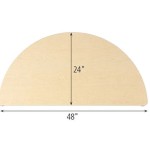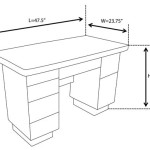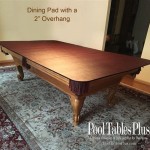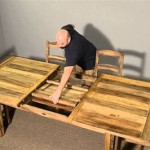Modern Outdoor Dining Table And Chairs: A Comprehensive Guide
Outdoor dining has become an increasingly popular activity, transforming patios, decks, and gardens into extensions of the home. The selection of modern outdoor dining table and chairs is a pivotal decision in shaping the aesthetic and functional value of these spaces. Modern design prioritizes clean lines, durable materials, and comfortable function, all while withstanding the elements. This article explores the various aspects of choosing modern outdoor dining furniture, focusing on materials, styles, and key considerations for creating an ideal outdoor dining experience.
Material Considerations for Longevity and Style
The material from which outdoor dining tables and chairs are constructed significantly impacts their durability, appearance, and maintenance requirements. Several popular materials are commonly used in modern outdoor dining sets, each offering unique advantages and disadvantages.
Teak: Teak is a hardwood renowned for its exceptional resistance to weather, insects, and decay. Its natural oils protect it from the elements, making it an ideal choice for outdoor furniture. Teak develops a silver-gray patina over time if left untreated, which many find aesthetically pleasing. Regular cleaning is typically sufficient to maintain teak furniture, although occasional oiling can help retain its original color. The cost of teak furniture tends to be higher compared to other materials, reflecting its superior quality and longevity.
Aluminum: Aluminum is a lightweight and rust-resistant metal that is often used in modern outdoor furniture. Powder-coated aluminum is particularly durable, providing a protective layer that prevents corrosion and fading. Aluminum furniture is easy to clean and maintain, typically requiring only soap and water. Its lightweight nature allows for easy relocation and storage. Aluminum can heat up in direct sunlight, so consider using cushions for added comfort.
Wicker/Rattan: Wicker and rattan are commonly used materials for outdoor furniture, offering a natural and textured aesthetic. Natural rattan is not suitable for outdoor use, but synthetic wicker (resin wicker) is designed to withstand the elements. Resin wicker is typically woven over an aluminum frame, providing both durability and style. Wicker furniture is relatively lightweight and easy to maintain. Regular cleaning with a soft brush and soapy water is usually sufficient. Avoid exposing wicker furniture to prolonged periods of intense sunlight, which can cause the material to fade or become brittle.
Steel: Steel is a strong and durable material that is often used in outdoor furniture. Stainless steel is particularly resistant to rust and corrosion, making it a suitable option for outdoor use. Steel furniture is typically heavier than aluminum, providing stability and sturdiness. Powder-coated steel offers added protection against the elements. Like aluminum, steel can become hot in direct sunlight, necessitating the use of cushions for comfort.
Concrete: Concrete is increasingly popular for outdoor furniture, offering a modern and industrial aesthetic. Concrete tables are exceptionally durable and stable, able to withstand harsh weather conditions. However, concrete is heavy and can be difficult to move. It is also porous and can stain if not properly sealed. Regular sealing is necessary to protect concrete furniture from moisture and stains.
Wood Alternatives (Composite): Wood alternatives, often made from recycled plastics and wood fibers, offer the look of wood without the maintenance requirements. These materials are resistant to rot, insect damage, and fading. Composite wood furniture is easy to clean and maintain, requiring only soap and water. It is also a more sustainable option compared to natural wood. While durable, it's important to choose high quality composite materials to avoid fading or warping over time.
Styles and Design Elements in Modern Outdoor Dining Sets
Modern outdoor dining sets encompass a wide range of styles, from minimalist and contemporary to rustic and industrial. The choice of style should complement the overall aesthetic of the outdoor space and reflect personal preferences.
Minimalist Design: Minimalist outdoor dining sets prioritize clean lines, simple shapes, and neutral colors. These sets often feature sleek aluminum or steel frames paired with simple wood or composite wood tabletops. Minimalist designs emphasize functionality and understated elegance.
Contemporary Design: Contemporary outdoor dining sets incorporate modern materials and innovative designs. These sets may feature curved lines, asymmetrical shapes, and bold colors. Contemporary designs often blend different materials, such as aluminum and wood, to create visually interesting pieces.
Rustic Design: Rustic outdoor dining sets evoke a sense of natural beauty and warmth. These sets often feature teak or reclaimed wood tabletops paired with wrought iron or weathered steel frames. Rustic designs emphasize the natural grain and texture of the materials.
Industrial Design: Industrial outdoor dining sets draw inspiration from urban and industrial aesthetics. These sets often feature concrete or steel tabletops paired with metal frames. Industrial designs emphasize durability and functionality.
Bohemian Design: Bohemian outdoor dining sets embrace eclecticism and vibrant colors. These sets may feature woven rattan chairs paired with mosaic tile tabletops. Bohemian designs emphasize comfort and relaxation.
Considerations for Seating: Chair design is just as important as the table itself. Modern designs often incorporate ergonomic principles for enhanced comfort. Armchairs offer added support, while backless benches can create a more informal and communal dining experience. Consider the overall height of the chairs in relation to the table to ensure comfortable dining posture.
Key Considerations When Choosing an Outdoor Dining Set
Selecting the right outdoor dining set involves careful consideration of several factors, including space, functionality, budget, and maintenance requirements.
Space and Size: The available space is a primary factor in determining the size and configuration of the outdoor dining set. Measure the area where the dining set will be placed to ensure that there is enough room for both the table and chairs, as well as ample space for movement around the set. Consider the shape of the space when selecting a table shape. Rectangular tables are well-suited for narrow spaces, while round or square tables work well in more open areas.
Functionality and Usage: Consider how the outdoor dining set will be used. If it will be used primarily for casual meals, a smaller table with fewer chairs may suffice. If it will be used for larger gatherings, a larger table with extra seating options may be necessary. Consider features such as extendable tables or stackable chairs for added flexibility.
Budget: Outdoor dining sets vary significantly in price, depending on the materials, design, and brand. Establish a budget before beginning the shopping process to narrow down the options. Remember that investing in high-quality, durable materials can save money in the long run by reducing the need for frequent replacements.
Maintenance Requirements: Different materials require different levels of maintenance. Consider the amount of time and effort that one is willing to invest in maintaining the outdoor dining set. Teak, for example, requires minimal maintenance, while concrete requires regular sealing. Choose materials that align with lifestyle and maintenance preferences.
Weather Conditions: The local weather conditions should also be taken into consideration. In areas with harsh winters, it may be necessary to store the outdoor dining set indoors during the off-season. Choose materials that are resistant to the specific weather conditions in the area. Coastal regions may require materials that are particularly resistant to salt air, while areas with heavy rainfall may require materials that are water-resistant and quick-drying.
Comfort: Comfort is a crucial consideration when choosing an outdoor dining set. Consider the ergonomics of the chairs and the overall comfort of the seating. Adding cushions and pillows can enhance comfort and add a personal touch to the outdoor dining space. Consider the height of the table in relation to the chairs to ensure a comfortable dining posture.
Storage: If outdoor furniture needs to be stored during the off-season, consider the ease of disassembly and storage. Lightweight materials like aluminum and wicker are easier to move and store. Stackable chairs and folding tables can also save space.
Warranty: Check the warranty offered by the manufacturer. A good warranty can protect the investment in case of defects or damage. Understand the terms and conditions of the warranty before making a purchase.
By carefully considering these factors, one can select a modern outdoor dining table and chairs that will provide years of enjoyment and enhance the beauty and functionality of the outdoor space.

7 Pieces Modern Outdoor Dining Set With Rectangle Table And Woven Rope Chair In Gray Homary

Mid Century Modern Rectangle 6 Person Extendable Outdoor Patio Dining Table Gray Black Homary

Modern Teak Outdoor Dining Table Bond 6 Ft Rectangular

Modern Teak Outdoor Rectangle Dining Table 87 West Elm
Top 20 Outdoor Dining Table Ideas 2024 Edition 2modern

Cayman Outdoor Patio 5 Piece Round Dining Table Set In Aluminum With Grey Cushions Las Vegas Furniture Modern Home Cornerstone

Tortuga Outdoor Lakeview Modern 5 Piece Aluminum Patio Dining Set With Charcoal Cushions Table And Chair Bundle Sky 5pc Dng Ch The Home Depot

Outdoor Patio Dining Sets Tables Benches Chairs Terra Table Id Modern And

Alegria Outdoor Patio 7 Piece Dining Table Set In Aluminum With Grey Rope And Cushions Las Vegas Furniture Modern Home Cornerstone

Modern Outdoor Furniture Room Board
Related Posts








